Top Tier CPU Air Coolers Q3 2015: 9-Way Roundup Review
by E. Fylladitakis on July 6, 2015 8:00 AM ESTThe Reeven Okeanos RC-1402
Reeven is a Taiwanese newcomer in the industry. Naturally, most people reading this probably never even heard the company name before today. The company was founded just over a year ago and currently only offers CPU coolers, fans and fan controllers. Reeven sent us their most powerful CPU cooler as well, the Okeanos (RC-1402).
The box that the Reeven comes supplied in is relatively small. Nevertheless, the protection appears adequate, with polyethylene foam protecting the cooler and the bundled items packed inside a cardboard box.
The bundle is a little crudely packed and virtually kept to a minimum. Reeven supplies only the hardware necessary for the mounting of the cooler, a single dose of thermal grease, wire clips for up to three cooling fans, speed reducers for the two provided fans and a leaflet with basic installation instructions.
Reeven supplies two cooling fans alongside with the Okeanos, one 120 mm and one 140 mm fan. Both fans have black frames and genista yellow blades. These are relatively simple models, with sleeve bearings, lacking fancy blades or vibration absorbers. There is one thing of note about these two fans though: they are ridiculously powerful, with the 140 mm and the 120 mm fan rated for a maximum speed of 1700 RPM and 1800 RPM respectively.
The Okeanos is a symmetric dual tower CPU cooler, with strangely narrow towers for its class. Although the difference is very small, the fins of each tower are not precisely geometrically symmetric, with the front side having three small and the rear side one long indentations. The top fin is a 1 mm thick aluminum cover with the company logo punched on it.
The wire fan installation clips do allow moving the front fan upwards in order to gain some RAM clearance - as long as the case is wide enough, of course. Installation-wise, they are a bit of a pain, as Reeven's approach is far too crude, with the wire clips just going straight into the fan holes and clipping onto the side of the fan.
Furthermore, the frame of the 120 mm fan just barely touches the extruded sides of the fins. It is very easy for the 120 mm fan to be installed with only one side on the extruded fins, increasing noise and reducing performance.
Even though the Okeanos initially looks very simple, the bottom of the cooler makes it very interesting. The base is split between a nickel-plated copper lower part and a steel top part, providing mechanical cohesion and retention. In between these two parts, there are six heatpipes, secured with a very generous amount of solder. The two central heatpipes are 8 mm thick, while the other four heatpipes are 6 mm thick, making this the only cooler with an asymmetric heatpipe configuration in our review. The contact surface is well polished and free of imperfections, yet not machined down to a perfect mirror finish.


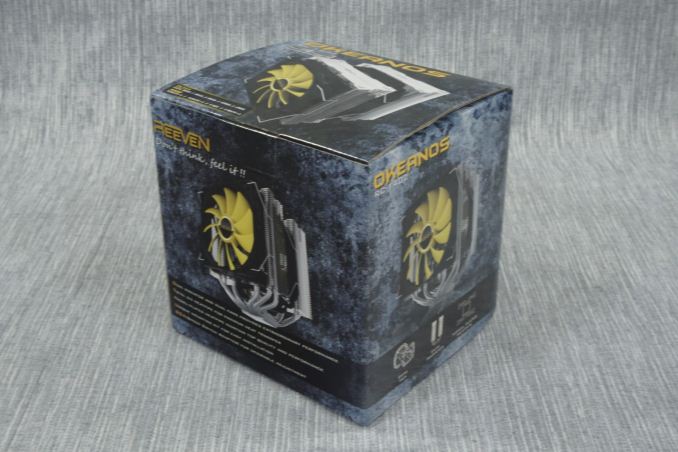
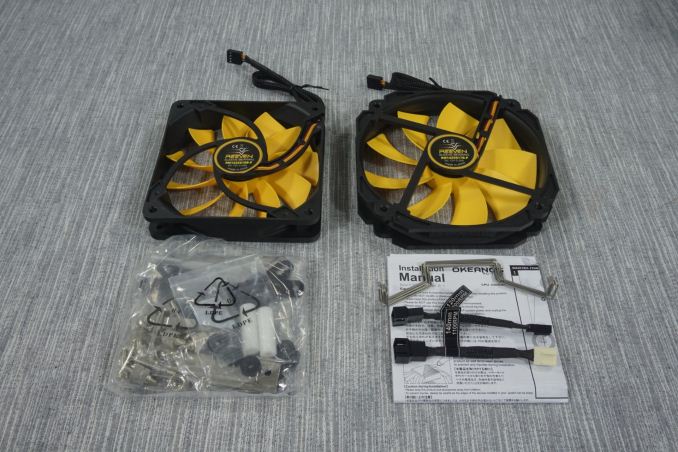
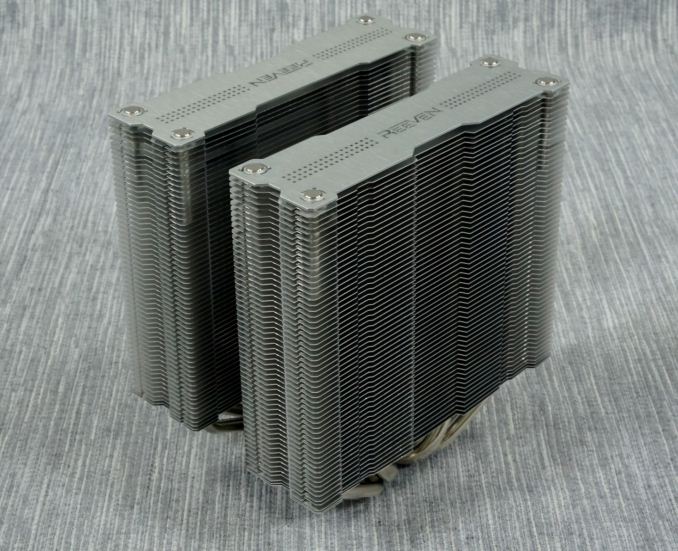
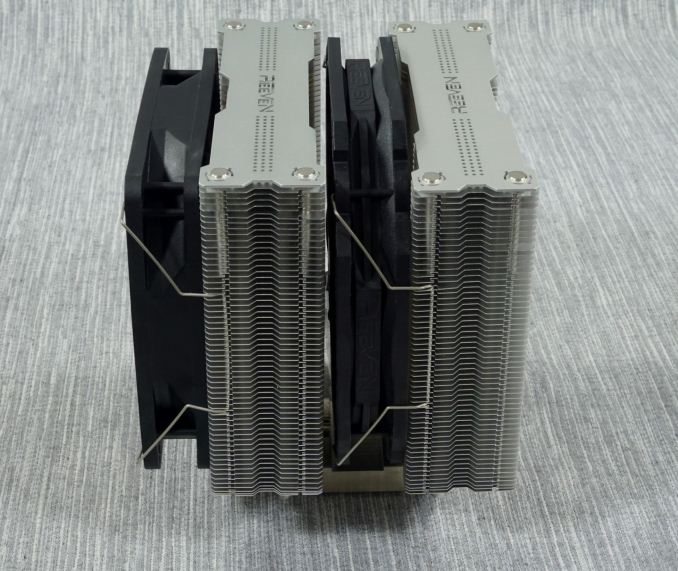
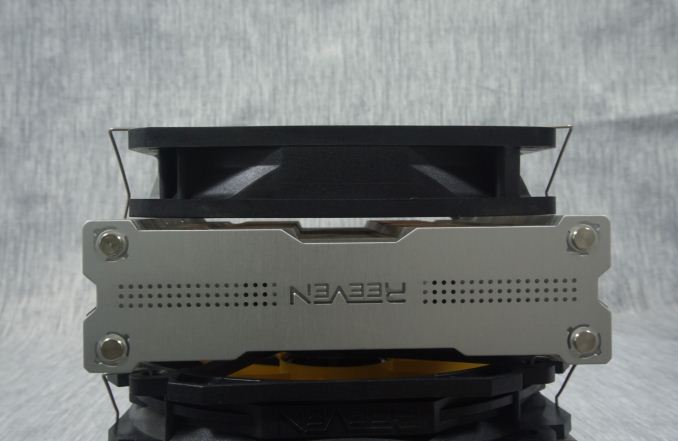
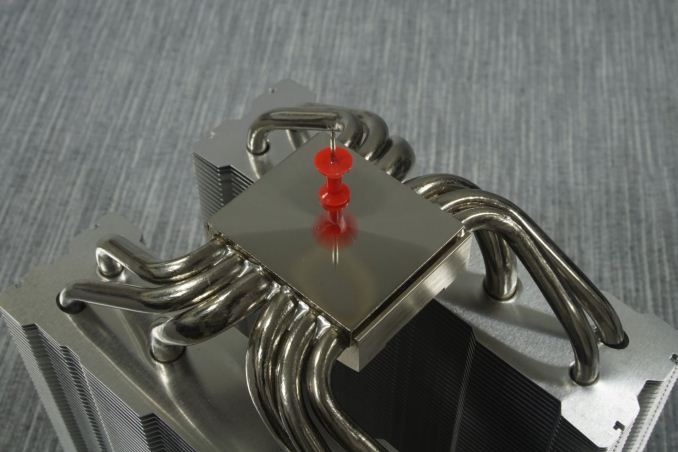








135 Comments
View All Comments
marraco - Monday, July 6, 2015 - link
Something really important that never is reviewed is dust control and maintenance.As radiator fins get closer, they have more dissipation area, but air flow gets worse. Yet the main problem of fins closeness is that they accumulate dust much faster, and get occluded.
No review makes a dust test. I have a Thermaltake cooler, which works excellent when is clean, but it rapidly loses his capacity due to being occluded by dust.
The easiest way to remove his dust is to use canned air, but it is a short lived fix, because an air cleaned radiator occludes itself very fast, sometimes in matter of weeks.
The only way to clean it for good is to take out the dissipator, and put in in the dish washer. But that is a cumbersome task. I need to do a lot of work just to clean it, and I need thermal paste to place it again on the motherboard.
So, maintenance is as important as cooling and noise.
A good cooler should pass a dusting test (being exposed to a day of dirty and dusty air current), and should be possible to clean it without much hassle, without applying thermal paste, without using screws, without need to access both sides of the motherboard, and without his pegs breaking or being degraded by manipulation.
'nar - Tuesday, July 7, 2015 - link
Interesting concern. It makes sense, yet is never considered. I think the best answer is the same as electricity, you need to provide the best environment you can for your computer. Higher quality components are more sensitive to dirty power, and dusty air. Get that PC off the floor, and get a case with good dust filters. And if your room is bad enough, get an room air filter. I have one on my desk right in front of my PC. A Honeywell HEPA air filter.Impulses - Monday, July 6, 2015 - link
I understand why cases are tested with stock fans, replacing 3+ quality fans will significantly alter the price equation... It's a trivial difference for $50-100 heatsinks tho, many are often even sold sans fans anyway.If nothing else, a single apples to apples test with all running the same fan would've been welcome. In addition to something like the Hyper 212 as a baseline, the different Thermalright TRUE Spirit variants have remained a solid value over the years (they perform better than the 212 and even closer to some of these as per HardOCP's last roundup).
Is there gonna be a midrange roundup? Spending upwards of $65 on an air cooler never made much sense to me when more affordable options were so close in both noise and performance. Out of 9 coolers tested only 3 or so come in at a sensible price, at $75+ wouldn't it make more sense to go AIO WC?
xthetenth - Monday, July 6, 2015 - link
If you want low noise, good thermals and dead quiet idle well into the land of diminishing returns, high end air is still a very compelling alternative to water, especially if you're willing to put the effort into some ducting.However midrange products can be excellent and are well worth a good long look before hanging a hundred bucks off your socket.
'nar - Tuesday, July 7, 2015 - link
I was a HSF fanboy until I actually needed a water cooling system. Specs and testing does not show response time. Fast, transient loads can overwhelm a HSF, as heat pipes cannot transfer heat as fast as water. For low power CPU's a HSF is fine, but when you go over 100 watts the noise is less of an issue, as a HSF will need much more airflow to compare to the higher heat transfer ability of W/C. And instantaneous loads are more likely to cause system instability due to the less efficient heat transfer rates of heatpipes.meacupla - Tuesday, July 7, 2015 - link
I am going to nitpick on what you're saying there, because you have it confused.Heatpipes use some form of vaporized liquid inside and they actually transmit heat quite good, especially when compared against sold copper rods. Where they fail, is that they do not have a lot of capacity for transferring large amounts of heat.
Water is actually quite poor at transmitting heat, as it's a non-metal and an insulator. It does, however, have great capacity to hold heat.
This is why large bodies of water are warm during winter and cold during summer and results in mild weather near the coast and extreme weather in the interior.
The advantage of water cooling systems, over air cooling, is the ability to place large radiators, with a lot of surface area, in spots that get fresh air from outside the case, instead of warmed up air that is already inside the case. Heatsinks are also limited to size and weight constraints around the socket.
Were it possible to attach a triple 120mm fan heatpipe heatsink, as in parallel layout, instead of serial dual towers, directly to the CPU, I'm quite sure the results would be similar to a 360mm radiator water cooling setup.
xthetenth - Tuesday, July 7, 2015 - link
Yeah, he's describing the thermal mass of the coolant, not any transfer capability. It seems that running coolant through radiator fins does have an advantage of relying on the fins to radiate the heat out from a heatpipe, but for a similar surface area, it's questionable how large the advantage is, especially at CPU TDPs.GPUs on the other hand have a more constrained form factor for large air cooling and a higher TDP, so they are a more promising place for CLCs.
PitneFor - Monday, July 6, 2015 - link
wheres Prolimatech, my precious...mejobloggs - Monday, July 6, 2015 - link
I'd be very interested to see a size-per-performance chart.I usually buy coolers that perform the best without being too large. Although I guess "Top Tier" coolers isn't the right article to look for smaller size coolers :p
Impulses - Monday, July 6, 2015 - link
Leaving it to the manufacturers to select their entry is always messy or questionable IMO, TR choosing the Macho over the Silver Arrow for one... Still curious whether there's a midrange round up planned or if this is it for air coolers at AT for a couple more years...Despite the criticism I do appreciate E Fyll's thorough process, otherwise I imagine I and many others wouldn't even bother commenting. Low end (212+) and high end ($120 AIO?) base lines would make the article much more useful tho.
The into even suggests some people prefer high end air over WC at the start but then leaves that up in the air... No pun intended.